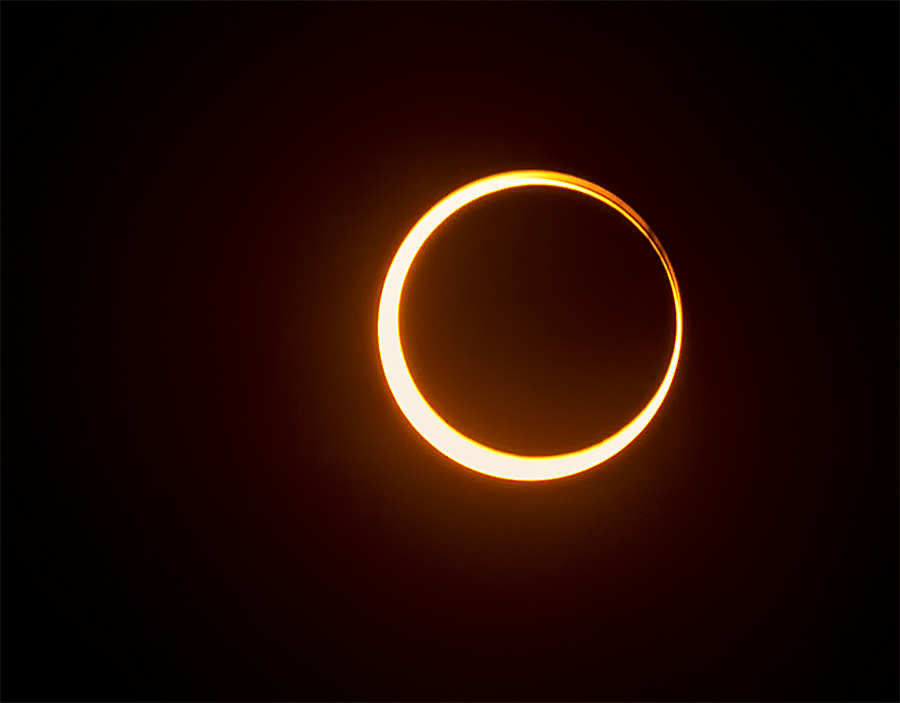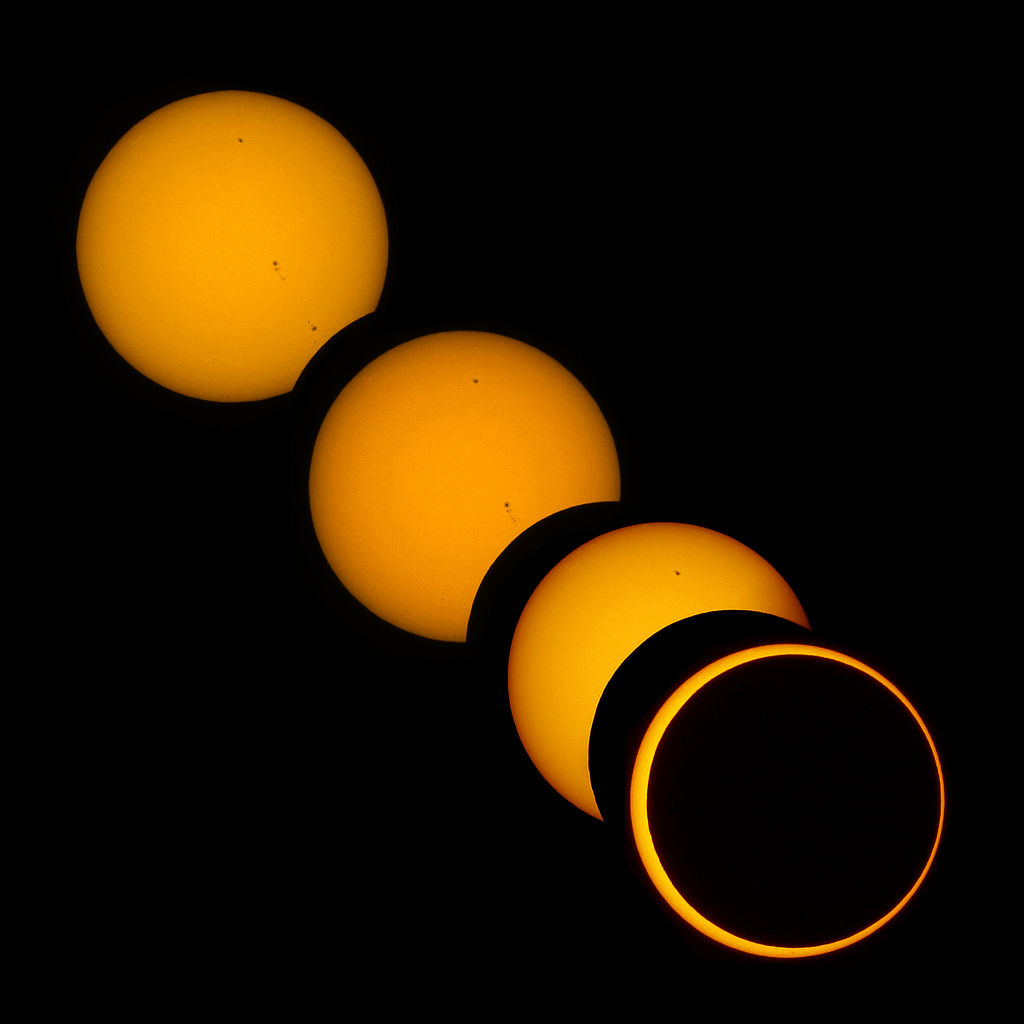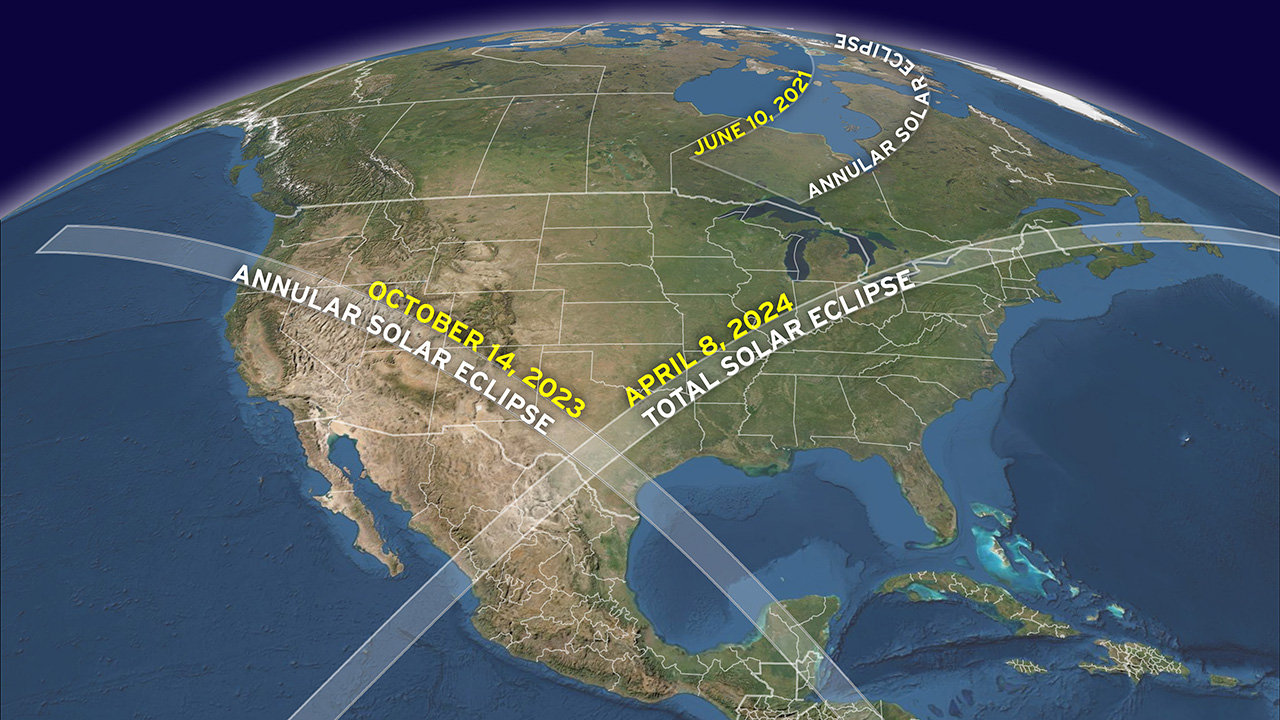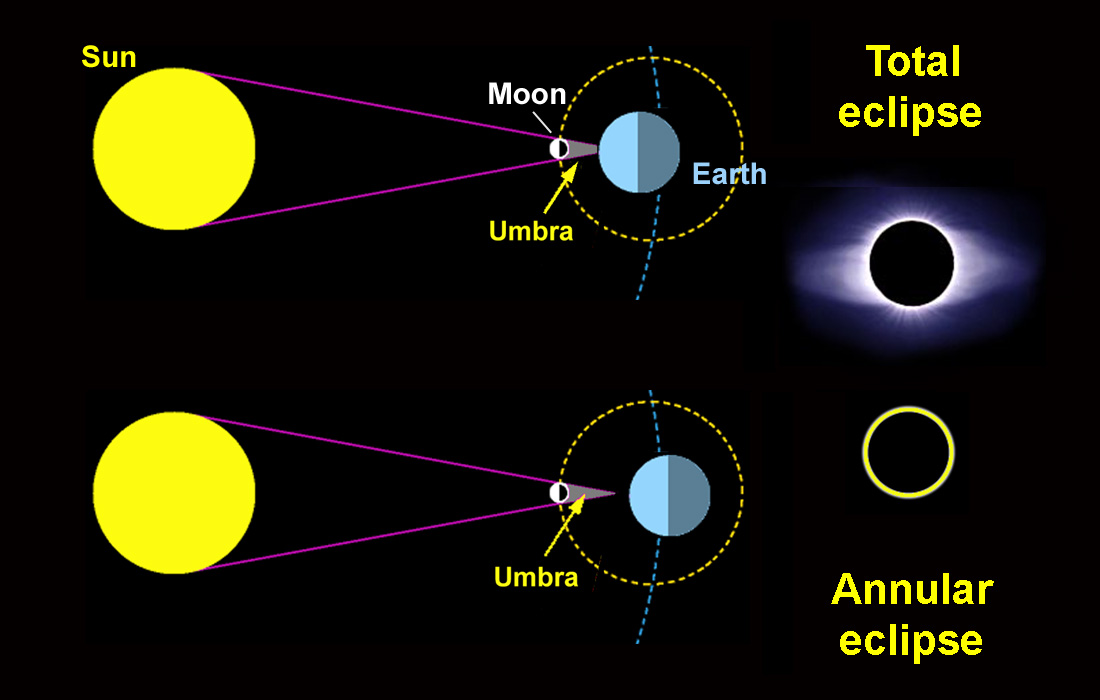Annular Solar Eclipses
🌞 🌑 🌎
AKA a “Ring of Fire” eclipse, they occur when the Moon’s apparent diameter is smaller than the Sun’s, blocking most of the Sun’s light and causing the Sun to look like an annulus (ring).
The next annular solar eclipse will be Tuesday, October 2, 2024 • start: 15:43 UTC • max: 18:45 UTC • end: 21:47 UTC.
Photo Credit: Stefan Seip
The “Ring of Fire” Eclipse
A solar eclipse happens when the Moon moves between the Sun and Earth, casting a shadow on Earth, fully or partially blocking the Sun’s light in some areas.
Because the moon is farther away from Earth, it seems smaller and does not block the entire view of the sun. When the Moon comes just shy of completely blocking out the Sun a bright ring or annulus is visible. This is a special kind of partial eclipse, an annular eclipse.
During an annular eclipse, the Moon is far enough away from Earth that the Moon appears smaller than the Sun in the sky. Since the Moon does not block the entire view of the Sun, it will look like a dark disk on top of a larger, bright disk. This creates what looks like a ring of fire around the Moon.
The Ring of Fire
Photos from previous eclipses show the “ring of fire”. Graphics show where & why it happens.

Annular Eclipse – Japan – May 21, 2012 CREDIT: George Olcott
WHAT IT LOOKS LIKE
Here’s a peak at what an annular eclipse looks like if viewing with solar glasses or a filtered eye piece.
Annular Eclipse filtered view – animation shows filtered eyepiece view of an annular eclipse but with only the black background (i.e. view with eclipse glasses on)
Annular Eclipse closeup view – animation shows the filtered eyepiece view with the clouds moving with halo rainbows. Like one might see by holding a piece of solar filter against the sky. Sky darkens during annularity.
Credit: NASA, Music Provided By Killer Tracks: “Bring Me Up” – Kampe Wikstrom
CREDIT: Don Davis under contract to Rice University, paid for by the NASA’s Heliophysics Education Consortium, and are copyright Rice University
OBSERVATIONS

CREDIT: NASA Lunar Science Institute’s May 20, 2012 Annular Eclipse Video. This video is a compilation of 162 photos taken by Dr. Dale Cruikshank at the Grand Canyon in Arizona during the May 20th, 2012 annular eclipse. Dr. Cruikshank is one of the premier astronomers and planetary scientists in the Astrophysics Branch at NASA Ames Research Center, Moffett Field, Calif. The video was produced by the NASA Lunar Science Institute (NLSI).


Ring of Fire – May 10 2013 Annular Solar Eclipse, Pilbara, Western Australia
Photography & Editing – Colin Legg • Photography – Geoff Sims – facebook.com/BeyondBeneath • Original Music Peter Nanasi – peternanasi.com
PROTECT YOUR EYES!
Unlike a total solar eclipse, at no time will this be safe to view with the naked eyes. Be sure to carefully read the details to understand how to protect your eyes! Homemade filters or ordinary sunglasses, even very dark ones, are not safe for looking at the uneclipsed or partially eclipsed Sun.
Partial Solar Eclipse
If you’re not in the direct path for a annular eclipse—but still within the outside of the path—this is what you may have seen with proper eye protection.
In some places, viewers didn’t get to see this ring around the Moon. However, they experienced a partial solar eclipse if within range as the map above shows. This happens when the Sun, Moon, and Earth are not exactly lined up. The Sun will appeared to have a dark shadow on only part of its surface. Viewers in parts of the eastern United States and northern Alaska saw a partial solar eclipse on June 10, along with much of Canada and parts of the Caribbean, Europe, Asia, and northern Africa.
In the United States, the partial eclipse was visible along parts of the Southeast, Northeast, Midwest, and in Northern Alaska. In many of these locations, the eclipse will occur before, during, and shortly after sunrise. This meant that viewers will need to get a clear view of the horizon during sunrise in order to see the eclipse.


Mark your calendars! Two upcoming solar eclipses in 2023 & 2024.
After that, you’ll have to travel, because you won’t see another one in the USA until 2045!!



